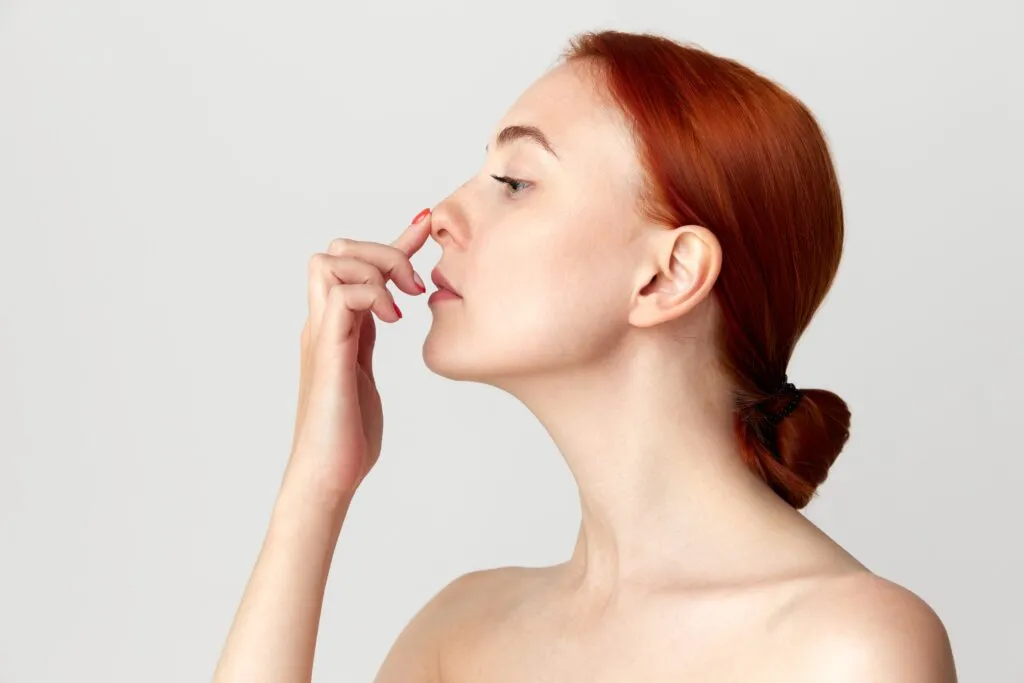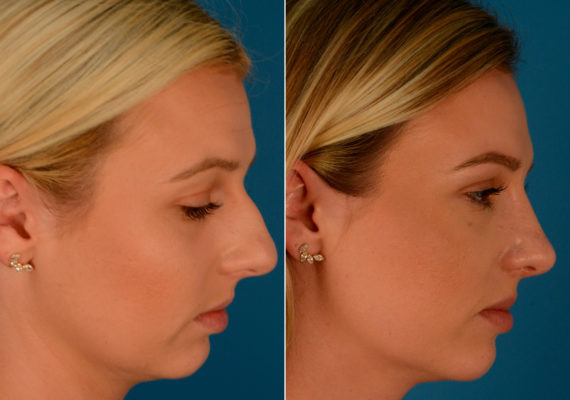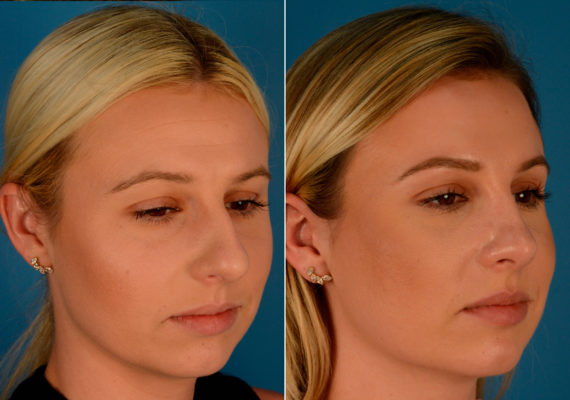Rhinoplasty, commonly referred to as nose surgery, is a popular cosmetic procedure designed to enhance the appearance and function of the nose. While the transformation can be remarkable, understanding the recovery process is crucial for achieving optimal results and a smooth healing experience. Knowing what to expect during this time can help patients prepare mentally and physically, ensuring they take the necessary steps for a successful recovery.

Maximize Your Rhinoplasty Recovery
- Expect swelling, bruising, and some discomfort after rhinoplasty. Use prescribed pain medication, and cold compresses, and keep your head elevated to reduce swelling.
- Recovery typically takes about 1-2 weeks, with swelling peaking initially and reducing over time. Full results may take several months to appear.
- Follow your surgeon’s instructions closely, including avoiding strenuous activities and maintaining proper hygiene to prevent infection.
- Stay hydrated and maintain a balanced diet rich in proteins and vitamins to support faster healing.
- Regular check-ups with your surgeon are crucial to monitor healing and address any concerns. Trust and follow their guidance for the best recovery outcomes.
Unveiling the Rhinoplasty Surgery: What to Expect
Rhinoplasty, also known as nose surgery, aims to enhance facial balance. During the initial consultation, expectations, and evaluations are discussed. The procedure is usually done on an outpatient basis, allowing patients to go home the same day. Post-operative check-ups are necessary to monitor progress, with noticeable improvements within a week and significant results in three weeks. Recovery entails patience and following post-op guidelines.
The Key Factors Affecting Rhinoplasty Recovery Time
Rhinoplasty recovery depends on factors like the patient’s health, with healthier individuals recovering faster. The surgery’s complexity and post-op care can affect recovery speed. Individual healing rates vary due to genetics and trauma response. Recognizing that healing may differ from averages is essential.
Understanding the Healing Process and Swelling after Rhinoplasty
Facial swelling is common after rhinoplasty, particularly in the nasal area. This swelling is due to the body’s natural healing process, with nutrient-rich blood and healing cells rushing in, peaking in the first week. While the initial swelling goes down, subtle swelling may linger for months as tissues heal. The extent of swelling varies for each person. It’s a normal part of the healing process post-surgery and will improve gradually. Follow your doctor’s recommendations for the best healing outcomes.

Post-Surgery Care and Activities to Speed Up Rhinoplasty Recovery
Proper care post-rhinoplasty accelerates recovery. Rest, avoid strenuous activity, and keep your head elevated initially. Stay hydrated and maintain a balanced diet. While light activities can resume a few days post-surgery, strenuous ones should wait for weeks. Regular check-ups monitor healing, with most resuming normal activities within 10-14 days. Early resumption risks complications. Individual recovery varies, so tailor post-surgery care accordingly.
Necessary Precautions: Managing Pain Post-Rhinoplasty
Managing pain is important after rhinoplasty. Prescribed medications can help control discomfort in the initial days. Avoiding heavy lifting and strenuous activities is crucial to prevent complications. Resting and following doctor’s recommendations are key to a smooth recovery. Pain typically decreases as time passes post-surgery. Following precautions will lead to a more comfortable recovery.
Are You Ready For A Consultation?
You are about to take the first steps towards improving your appearance and enhancing your self-image by learning about contemporary plastic surgery.
The Role of Your Surgeon during the Rhinoplasty Recovery Period
During rhinoplasty recovery, your surgeon plays a crucial role. They provide education, set expectations, and oversee healing after surgery. A skilled surgeon offers technical expertise and emotional support. They recommend pain management strategies, offer nutritional guidance, and monitor healing progress. Regular check-ups assist in assessing progress and making any needed changes. Trusting your surgeon and following up consistently enhance recovery. Following the surgeon’s instructions typically results in improved recovery outcomes.
Patient’s Role in Speeding Up Recovery Post-Rhinoplasty Surgery
Your role post-phinoplasty is vital. Avoid pushing limits and reduce strenuous activities. While light exercises can boost blood circulation, intense workouts can hinder recovery. It’s essential to gradually reintroduce activities and adhere to post-operative guidelines, like elevating your head and avoiding glasses in the early weeks. Regularly communicate with your surgeon and attend follow-ups to monitor healing.
Incorporating the Right Foods for Rhinoplasty Recovery
Nutrition impacts rhinoplasty recovery. Opt for protein-rich foods like lean meat, seeds, and greens for faster healing. Avoid sodium-rich foods like canned soups and fried items that can cause swelling. Incorporate fruits, veggies, and herbs for vascular health. Staying hydrated and maintaining a balanced diet aids in swift recovery.
Anticipating the Physical Changes: The Weeks Following Rhinoplasty
It is important for individuals considering a rhinoplasty or nose job surgery procedure, that they understand the common transformation that takes place during the healing process. Swelling around the nose and eyes typically occurs in the first-week post-surgery, which is a normal response of the body as it begins the healing journey after experiencing trauma.
Skin, which covers an intricate network of blood vessels and tissues, responds to the trauma of surgery by redness and sensitivity. It usually takes a couple of weeks for these symptoms to subside, allowing your new appearance to take shape. Observing these changes will help manage your expectations and adjust to your new look.
It’s essential to remember that a nose job’s final results are not instantly visible. The swelling can take several weeks, sometimes months, to fully subside. These are the unique phases that your body needs to go through after rhinoplasty. Being well-informed and patient will make your recovery process smoother and more predictable.
Common Rhinoplasty Concerns: Dealing with Stitches
Stitches are crucial in rhinoplasty recovery. Swelling of nasal tissue and healing time are common post-surgery concerns. Surgeons place stitches strategically to maintain tissue shape during healing. Following the surgeon’s instructions post-surgery is important for best results and to prevent stitch-related complications.
Before & After Photos
* Each patient is unique and individual results may vary.
Resuming Daily Activities and Work Post-Rhinoplasty
Recovering from rhinoplasty surgery should be done gradually to ensure proper healing. During the first few weeks after nose job surgery, it is important to avoid strenuous exercise and any activities that can result in contact with the facial features. Pain medication may be prescribed by your board-certified plastic surgeon to help manage discomfort during recovery. Over time, you can slowly reintroduce regular activities into your routine but should follow all instructions provided by the doctor for the best results of your facial plastic surgery.
Maintaining a Healthy Recovery: Important Points to Consider
It is important to remember that maintaining your health during recovery after a rhinoplasty procedure is key to the desired results. In the days after surgery, it is recommended to use cold compresses over the nasal passages and not to be involved in any contact sports for at least 6 weeks. Immediately following the surgical procedure, your facial plastic surgeon will recommend keeping your head elevated for several hours after surgery to reduce blood flow and swelling in the face. It is essential to follow these instructions to ensure a successful recovery from nasal surgery.
Dr. Agarwal and Dr. Holmes, with years of expertise in rhinoplasty, ensure personalized care throughout your recovery. For professional guidance, visit our contact page and embark on your successful rhinoplasty journey with us.

